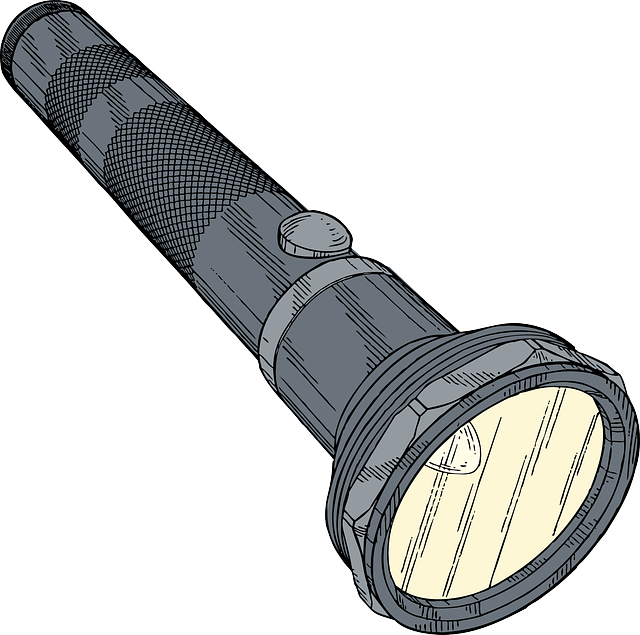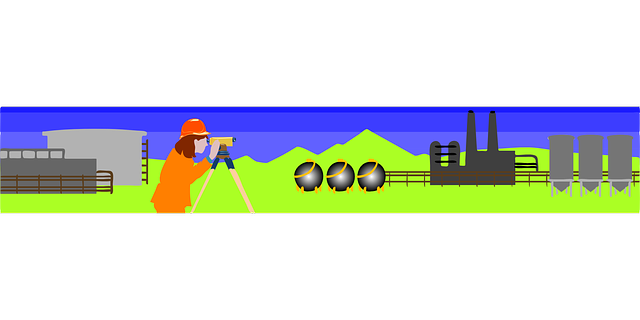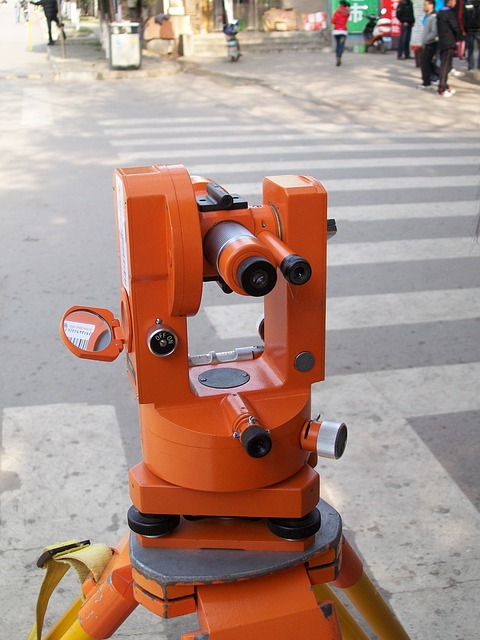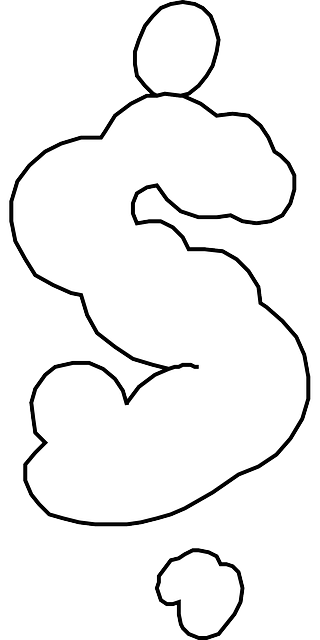تسلسل الجينوم الكامل
تسلسل الجينوم الكامل Whole genome sequencing، هوis ostensibly the process of determining the complete DNA sequence of an organism's genome at a single time. This entails sequencing all of an organism's chromosomal DNA as well as DNA contained in the mitochondria and, for plants, in the chloroplast. In practice, genome sequences that are nearly complete are also called whole genome sequences.
Whole genome sequencing has largely been used as a research tool, but was being introduced to clinics in 2014. In the future of personalized medicine, whole genome sequence data may be an important tool to guide therapeutic intervention. The tool of gene sequencing at SNP level is also used to pinpoint functional variants from association studies and improve the knowledge available to researchers interested in evolutionary biology, and hence may lay the foundation for predicting disease susceptibility and drug response.
Whole genome sequencing should not be confused with DNA profiling, which only determines the likelihood that genetic material came from a particular individual or group, and does not contain additional information on genetic relationships, origin or susceptibility to specific diseases. In addition, whole genome sequencing should not be confused with methods that sequence specific subsets of the genome - such methods include whole exome sequencing (1-2% of the genome) or SNP genotyping (<0.1% of the genome). As of 2017 there were no complete genomes for any mammals, including humans. Between 4% to 9% of the human genome, mostly satellite DNA, had not been sequenced.
المصطلح
It is also known as WGS, full genome sequencing, complete genome sequencing, or entire genome sequencing.
التاريخ
The DNA sequencing methods used in the 1970s and 1980s were manual, for example Maxam-Gilbert sequencing and Sanger sequencing. The shift to more rapid, automated sequencing methods in the 1990s finally allowed for sequencing of whole genomes.
The first organism to have its entire genome sequenced was Haemophilus influenzae in 1995. After it, the genomes of other bacteria and some archaea were first sequenced, largely due to their small genome size. H. influenzae has a genome of 1,830,140 base pairs of DNA. In contrast, eukaryotes, both unicellular and multicellular such as Amoeba dubia and humans (Homo sapiens) respectively, have much larger genomes (see C-value paradox).Amoeba dubia has a genome of 700 billion nucleotide pairs spread across thousands of chromosomes. Humans contain fewer nucleotide pairs (about 3.2 billion in each germ cell - note the exact size of the human genome is still being revised) than A. dubia however their genome size far outweighs the genome size of individual bacteria.
The first bacterial and archaeal genomes, including that of H. influenzae, were sequenced by Shotgun sequencing. In 1996 the first eukaryotic genome (Saccharomyces cerevisiae) was sequenced. S. cerevisiae, a model organism in biology has a genome of only around 12 million nucleotide pairs, and was the first unicellular eukaryote to have its whole genome sequenced. The first multicellular eukaryote, and animal, to have its whole genome sequenced was the nematode worm: Caenorhabditis elegans in 1998. Eukaryotic genomes are sequenced by several methods including Shotgun sequencing of short DNA fragments and sequencing of larger DNA clones from DNA libraries such as bacterial artificial chromosomes (BACs) and yeast artificial chromosomes (YACs).
In 1999, the entire DNA sequence of human chromosome 22, the shortest human autosome, was published. By the year 2000, the second animal and second invertebrate (yet first insect) genome was sequenced - that of the fruit fly Drosophila melanogaster - a popular choice of model organism in experimental research. The first plant genome - that of the model organism Arabidopsis thaliana - was also fully sequenced by 2000. By 2001, a draft of the entire human genome sequence was published. The genome of the laboratory mouse Mus musculus was completed in 2002.
In 2004, the Human Genome Project published an incomplete version of the human genome. In 2008, a group from Leiden, The Netherlands, reported the sequencing of the first female human genome (Marjolein Kriek).
Currently thousands of genomes have been wholly or partially sequenced.
التفاصيل التجريبية
استخدام الخلايا للتسلسل
Almost any biological sample containing a full copy of the DNA—even a very small amount of DNA or ancient DNA—can provide the genetic material necessary for full genome sequencing. Such samples may include saliva, epithelial cells, bone marrow, hair (as long as the hair contains a hair follicle), seeds, plant leaves, or anything else that has DNA-containing cells.
The genome sequence of a single cell selected from a mixed population of cells can be determined using techniques of single cell genome sequencing. This has important advantages in environmental microbiology in cases where a single cell of a particular microorganism species can be isolated from a mixed population by microscopy on the basis of its morphological or other distinguishing characteristics. In such cases the normally necessary steps of isolation and growth of the organism in culture may be omitted, thus allowing the sequencing of a much greater spectrum of organism genomes.
Single cell genome sequencing is being tested as a method of preimplantation genetic diagnosis, wherein a cell from the embryo created by in vitro fertilization is taken and analyzed before embryo transfer into the uterus. After implantation, cell-free fetal DNA can be taken by simple venipuncture from the mother and used for whole genome sequencing of the fetus.
التقنيات المبكرة
التقنيات الحالية
While capillary sequencing was the first approach to successfully sequence a nearly full human genome, it is still too expensive and takes too long for commercial purposes. Since 2005 capillary sequencing has been progressively displaced by high-throughput (formerly "next-generation") sequencing technologies such as Illumina dye sequencing, pyrosequencing, and SMRT sequencing. All of these technologies continue to employ the basic shotgun strategy, namely, parallelization and template generation via genome fragmentation.
Other technologies are emerging, including nanopore technology. Though nanopore sequencing technology is still being refined, its portability and potential capability of generating long reads are of relevance to whole-genome sequencing applications.
التحليل
In principle, full genome sequencing can provide the raw nucleotide sequence of an individual organism's DNA. However, further analysis must be performed to provide the biological or medical meaning of this sequence, such as how this knowledge can be used to help prevent disease. Methods for analysing sequencing data are being developed and refined.
Because sequencing generates a lot of data (for example, there are approximately six billion base pairs in each human diploid genome), its output is stored electronically and requires a large amount of computing power and storage capacity.
While analysis of WGS data can be slow, it is possible to speed up this step by using dedicated hardware.
تجارياً
مقارنة بتقنيات أخرى
مصفوفات الدنا المكروية
التطبيقات
تسلسلات الطفرات
Whole genome sequencing has established the mutation frequency for whole human genomes. The mutation frequency in the whole genome between generations for humans (parent to child) is about 70 new mutations per generation. An even lower level of variation was found comparing whole genome sequencing in blood cells for a pair of monozygotic (identical twins) 100-year-old centenarians. Onlyثمانية somatic differences were found, though somatic variation occurring in less than 20% of blood cells would be undetected.
In the specifically protein coding regions of the human genome, it is estimated that there are about 0.35 mutations that would change the protein sequence between parent/child generations (less than one mutated protein per generation).
In cancer, mutation frequencies are much higher, due to genome instability. This frequency can further depend on patient age, exposure to DNA damaging agents (such as UV-irradiation or components of tobacco smoke) and the activity/inactivity of DNA repair mechanisms.[] Furthermore, mutation frequency can vary between cancer types: in germline cells, mutation rates occur at approximately 0.023 mutations per megabase, but this number is much higher in breast cancer (1.18-1.66 somatic mutations per Mb), in lung cancer (17.7) or in melanomas (≈33). Since the haploid human genome consists of approximately 3,200 megabases, this translates into about 74 mutations (mostly in noncoding regions) in germline DNA per generation, but 3,776-5,312 somatic mutations per haploid genome in breast cancer, 56,640 in lung cancer and 105,600 in melanomas.
The distribution of somatic mutations across the human genome is very uneven, such that the gene-rich, early-replicating regions receive fewer mutations than gene-poor, late-replicating heterochromatin, likely due to differential DNA repair activity. In particular, the histone modification H3K9me3 is associated with high, and H3K36me3 with low mutation frequencies.
الدرسات المرتبطة بالجينوم
In research, whole-genome sequencing can be used in a Genome-Wide Association Study (GWAS) - a project aiming to determine the genetic variant or variants associated with a disease or some other phenotype.
الاستخدام التشخيصي
In 2009, Illumina released its first whole genome sequencers that were approved for clinical as opposed to research-only use and doctors at academic medical centers began quietly using them to try to diagnose what was wrong with people whom standard approaches had failed to help. The price to sequence a genome at that time was US$19,500, which was billed to the patient but usually paid for out of a research grant; one person at that time had applied for reimbursement from their insurance company. For example, one child had needed around 100 surgeries by the time he was three years old, and his doctor turned to whole genome sequencing to determine the problem; it took a team of around 30 people that included 12 bioinformatics experts, three sequencing technicians, five physicians, two genetic counsellors and two ethicists to identify a rare mutation in the XIAP that was causing widespread problems.
Due to recent cost reductions (see above) whole genome sequencing has become a realistic application in DNA diagnostics. In 2013, the 3Gb-TEST consortium obtained funding from the European Union to prepare the health care system for these innovations in DNA diagnostics.Quality assessment schemes, Health technology assessment and guidelines have to be in place. The 3Gb-TEST consortium has identified the analysis and interpretation of sequence data as the most complicated step in the diagnostic process. At the Consortium meeting in Athens in September 2014, the Consortium coined the word genotranslation for this crucial step. This step leads to a so-called genoreport. Guidelines are needed to determine the required content of these reports.
Currently available newborn screening for childhood diseases allows detection of rare disorders that can be prevented or better treated by early detection and intervention. Specific genetic tests are also available to determine an etiology when a child's symptoms appear to have a genetic basis. Full genome sequencing, in addition has the potential to reveal a large amount of information (such as carrier status for autosomal recessive disorders, genetic risk factors for complex adult-onset diseases, and other predictive medical and non-medical information) that is currently not completely understood, may not be clinically useful to the child during childhood, and may not necessarily be wanted by the individual upon reaching adulthood.نطقب:Mcn
Genomes2People (G2P), an initiative of Brigham and Women's Hospital and Harvard Medical School was created in 2011 to examine the integration of genomic sequencing into clinical care of adults and children. G2P's director, Robert C. Green, had previously led the REVEAL study — Risk Evaluation and Education for Alzheimer's Disease – a series of clinical trials exploring patient reactions to the knowledge of their genetic risk for Alzheimer's.
In 2018, researchers at Rady Children's Institute for Genomic Medicine in San Diego, CA determined that rapid whole-genome sequencing (rWGS) can diagnose genetic disorders in time to change acute medical or surgical management (clinical utility) and improve outcomes in acutely ill infants. The researchers reported a retrospective cohort study of acutely ill inpatient infants in a regional children's hospital from July 2016-March 2017. Forty-two families received rWGS for etiologic diagnosis of genetic disorders. The diagnostic sensitivity of rWGS was 43% (eighteen of 42 infants) and 10% (four of 42 infants) for standard genetic tests (P = .0005). The rate of clinical utility of rWGS (31%, thirteen of 42 infants) was significantly greater than for standard genetic tests (2%, one of 42; P = .0015). Eleven (26%) infants with diagnostic rWGS avoided morbidity, one had a 43% reduction in likelihood of mortality, and one started palliative care. In six of the eleven infants, the changes in management reduced inpatient cost by $800,000-$2,000,000. These findings replicate a prior study of the clinical utility of rWGS in acutely ill inpatient infants, and demonstrate improved outcomes and net healthcare savings. rWGS merits consideration as a first tier test in this setting.
الاعتبارات الأخلاقية
أشخاص ذوي تسلسل جينومي شائع
انظر أيضاً
- Coverage (genetics)
- Whole Exome Sequencing
- DNA sequencing
- DNA microarray
- DNA profiling
- Horizontal correlation
- Medical genetics
- Nucleic acid sequence
- Human Genome Project
- Personal Genome Project
- Genomics England
- Predictive medicine
- Personalized medicine
- Duplex sequencing
نطقب:No col break
المصادر
- ^ Alberts, Bruce; Johnson, Alexander; Lewis, Julian; Raff, Martin; Roberts, Keith; Walter, Peter (2008). "Chapter 8". Molecular biology of the cell (5th ed.). New York: Garland Science. p. 550. ISBN .
- ^ "Definition of whole-genome sequencing - NCI Dictionary of Cancer Terms". National Cancer Institute (in الإنجليزية). 2012-07-20. Retrieved 2018-10-13.
- ^ Gilissen (Jul 2014). "Genome sequencing identifies major causes of severe intellectual disability". Nature. 511 (7509): 344–7. Bibcode:2014Natur.511..344G. doi:10.1038/nature13394. PMID 24896178.
- ^ Nones, K; Waddell, N; Wayte, N; Patch, AM; Bailey, P; Newell, F; Holmes, O; Fink, JL; Quinn, MC; Tang, YH; Lampe, G; Quek, K; Loffler, KA; Manning, S; Idrisoglu, S; Miller, D; Xu, Q; Waddell, N; Wilson, PJ; Bruxner, TJ; Christ, AN; Harliwong, I; Nourse, C; Nourbakhsh, E; Anderson, M; Kazakoff, S; Leonard, C; Wood, S; Simpson, PT; Reid, LE; Krause, L; Hussey, DJ; Watson, DI; Lord, RV; Nancarrow, D; Phillips, WA; Gotley, D; Smithers, BM; Whiteman, DC; Hayward, NK; Campbell, PJ; Pearson, JV; Grimmond, SM; Barbour, AP (29 October 2014). "Genomic catastrophes frequently arise in esophageal adenocarcinoma and drive tumorigenesis". Nature Communications. 5: 5224. Bibcode:2014NatCo...5.5224N. doi:10.1038/ncomms6224. PMC 4596003. PMID 25351503.
- ^ van El, CG; Cornel, MC; Borry, P; Hastings, RJ; Fellmann, F; Hodgson, SV; Howard, HC; Cambon-Thomsen, A; Knoppers, BM; Meijers-Heijboer, H; Scheffer, H; Tranebjaerg, L; Dondorp, W; de Wert, GM (June 2013). "Whole-genome sequencing in health care. Recommendations of the European Society of Human Genetics". European Journal of Human Genetics. 21 Suppl 1: S1–5. doi:10.1038/ejhg.2013.46. PMC 3660957. PMID 23819146.
- ^ Mooney, Sean (Sep 2014). "Progress towards the integration of pharmacogenomics in practice". Human Genetics. 134 (5): 459–65. doi:10.1007/s00439-014-1484-7. PMC 4362928. PMID 25238897.
- ^ Kijk magazine, 01 January 2009
- ^ "Psst, the human genome was never completely sequenced". STAT (in الإنجليزية). 2017-06-20. Archived from the original on 2017-10-23. Retrieved 2017-10-23.
- ^ Marx, Vivien (11 September 2013). "Next-generation sequencing: The genome jigsaw". Nature. 501 (7466): 263–268. Bibcode:2013Natur.501..263M. doi:10.1038/501261a. PMID 24025842.
- ^ al.], Bruce Alberts ... [et (2008). Molecular biology of the cell (5th ed.). New York: Garland Science. p. 551. ISBN .
- ^ Fleischmann, R.; Adams, M.; White, O; Clayton, R.; Kirkness, E.; Kerlavage, A.; Bult, C.; Tomb, J.; Dougherty, B.; Merrick, J.; al., e. (28 July 1995). "Whole-genome random sequencing and assembly of Haemophilus influenzae Rd". Science. 269 (5223): 496–512. Bibcode:1995Sci...269..496F. doi:10.1126/science.7542800. PMID 7542800.
- ^ Eddy, Sean R. (November 2012). "The C-value paradox, junk DNA and ENCODE". Current Biology. 22 (21): R898–R899. Bibcode:1996CBio....6.1213A. doi:10.1016/j.cub.2012.10.002. PMID 23137679.
- ^ Pellicer, Jaume; FAY, Michael F.; Leitch, Ilia J. (15 September 2010). "The largest eukaryotic genome of them all?". Botanical Journal of the Linnean Society. 164 (1): 10–15. doi:10.1111/j.1095-8339.2010.01072.x.
- ^ Human Genome Sequencing Consortium, International (21 October 2004). "Finishing the euchromatic sequence of the human genome". Nature. 431 (7011): 931–945. Bibcode:2004Natur.431..931H. doi:10.1038/nature03001. PMID 15496913.
- ^ Goffeau, A.; Barrell, B. G.; Bussey, H.; Davis, R. W.; Dujon, B.; Feldmann, H.; Galibert, F.; Hoheisel, J. D.; Jacq, C.; Johnston, M.; Louis, E. J.; Mewes, H. W.; Murakami, Y.; Philippsen, P.; Tettelin, H.; Oliver, S. G. (25 October 1996). "Life with 6000 Genes". Science. 274 (5287): 546–567. Bibcode:1996Sci...274..546G. doi:10.1126/science.274.5287.546. PMID 8849441. Archived (PDF) from the original onسبعة March 2016.
- ^ The C. elegans Sequencing Consortium (11 December 1998). "Genome Sequence of the Nematode C. elegans: A Platform for Investigating Biology". Science. 282 (5396): 2012–2018. doi:10.1126/science.282.5396.2012. PMID 9851916.
- ^ Alberts, Bruce (2008). Molecular Biology of the Cell (5th ed.). New York: Garland Science. p. 552. ISBN .
- ^ Dunham, I. (December 1999). "The DNA sequence of human chromosome 22". Nature. 402 (6761): 489–495. Bibcode:1999Natur.402..489D. doi:10.1038/990031. PMID 10591208.
- ^ Adams MD; Celniker SE; Holt RA; et al. (2000-03-24). "The Genome Sequence of Drosophila melanogaster". Science. 287 (5461): 2185–2195. Bibcode:2000Sci...287.2185.. CiteSeerX 10.1.1.549.8639. doi:10.1126/science.287.5461.2185. PMID 10731132.
- ^ The Arabidopsis Genome Initiative (2000-12-14). "Analysis of the genome sequence of the flowering plant Arabidopsis thaliana". Nature. 408 (6814): 796–815. Bibcode:2000Natur.408..796T. doi:10.1038/35048692. PMID 11130711.
- ^ Venter JC; Adams MD; Myers EW; et al. (2001-02-16). "The Sequence of the Human Genome". Science. 291 (5507): 1304–1351. Bibcode:2001Sci...291.1304V. doi:10.1126/science.1058040. PMID 11181995.
- ^ Waterston RH; Lindblad-Toh K; Birney E; et al. (2002-10-31). "Initial sequencing and comparative analysis of the mouse genome". Nature. 420 (6915): 520–562. Bibcode:2002Natur.420..520W. doi:10.1038/nature01262. PMID 12466850.
- ^ International Human Genome Sequencing Consortium (2004-09-07). "Finishing the euchromatic sequence of the human genome". Nature. 431 (7011): 931–945. Bibcode:2004Natur.431..931H. doi:10.1038/nature03001. PMID 15496913.
- ^ Braslavsky, Ido; et al. (2003). "Sequence information can be obtained from single DNA molecules". Proc Natl Acad Sci USA. 100 (7): 3960–3984. Bibcode:2003PNAS..100.3960B. doi:10.1073/pnas.0230489100. PMC 153030. PMID 12651960.
- ^ Heger, Monica (October 2, 2013). "Single-cell Sequencing Makes Strides in the Clinic with Cancer and PGD First Applications". Clinical Sequencing News.
- ^ Yurkiewicz, I. R.; Korf, B. R.; Lehmann, L. S. (2014). "Prenatal whole-genome sequencing--is the quest to know a fetus's future ethical?". New England Journal of Medicine. 370 (3): 195–7. doi:10.1056/NEJMp1215536. PMID 24428465.
- ^ Mukhopadhyay R (February 2009). "DNA sequencers: the next generation". Anal. Chem. 81 (5): 1736–40. doi:10.1021/ac802712u. PMID 19193124.
- ^ Kwong, JC; McCallum, N; Sintchenko, V; Howden, BP (April 2015). "Whole genome sequencing in clinical and public health microbiology". Pathology. 47 (3): 199–210. doi:10.1097/pat.0000000000000235. PMC 4389090. PMID 25730631.
- ^ Strickland, Eliza (2015-10-14). "New Genetic Technologies Diagnose Critically Ill Infants Within 26 Hours - IEEE Spectrum". Spectrum.ieee.org. Archived from the original on 2015-11-16. Retrieved 2016-11-11.
- ^ Roach JC; Glusman G; Smit AF; et al. (April 2010). "Analysis of genetic inheritance in a family quartet by whole-genome sequencing". Science. 328 (5978): 636–9. Bibcode:2010Sci...328..636R. doi:10.1126/science.1186802. PMC 3037280. PMID 20220176.
- ^ Campbell CD; Chong JX; Malig M; et al. (November 2012). "Estimating the human mutation rate using autozygosity in a founder population". Nat. Genet. 44 (11): 1277–81. doi:10.1038/ng.2418. PMC 3483378. PMID 23001126.
- ^ Ye K; Beekman M; Lameijer EW; Zhang Y; Moed MH; van den Akker EB; Deelen J; Houwing-Duistermaat JJ; Kremer D; Anvar SY; Laros JF; Jones D; Raine K; Blackburne B; Potluri S; Long Q; Guryev V; van der Breggen R; Westendorp RG; 't Hoen PA; den Dunnen J; van Ommen GJ; Willemsen G; Pitts SJ; Cox DR; Ning Z; Boomsma DI; Slagboom PE (December 2013). "Aging as accelerated accumulation of somatic variants: whole-genome sequencing of centenarian and middle-aged monozygotic twin pairs". Twin Res Hum Genet. 16 (6): 1026–32. doi:10.1017/thg.2013.73. PMID 24182360.
- ^ Keightley PD (February 2012). "Rates and fitness consequences of new mutations in humans". Genetics. 190 (2): 295–304. doi:10.1534/genetics.111.134668. PMC 3276617. PMID 22345605.
- ^ Tuna M; Amos CI (November 2013). "Genomic sequencing in cancer". Cancer Lett. 340 (2): 161–70. doi:10.1016/j.canlet.2012.11.004. PMC 3622788. PMID 23178448.
- ^ Moran, Laurence A. (24 March 2011). "Sandwalk: How Big Is the Human Genome?". sandwalk.blogspot.com. Archived from the original on 1 December 2017. Retrieved 29 April 2018.
- ^ Hodgkinson, Alan; Chen, Ying; Eyre-Walker, Adam (January 2012). "The large-scale distribution of somatic mutations in cancer genomes". Human Mutation. 33 (1): 136–143. doi:10.1002/humu.21616. ISSN 1098-1004. PMID 21953857.
- ^ Supek, Fran; Lehner, Ben (2015-05-07). "Differential DNA mismatch repair underlies mutation rate variation across the human genome". Nature. 521 (7550): 81–84. Bibcode:2015Natur.521...81S. doi:10.1038/nature14173. ISSN 0028-0836. PMC 4425546. PMID 25707793.
- ^ Schuster-Böckler, Benjamin; Lehner, Ben (2012-08-23). "Chromatin organization is a major influence on regional mutation rates in human cancer cells". Nature. 488 (7412): 504–507. Bibcode:2012Natur.488..504S. doi:10.1038/nature11273. ISSN 1476-4687. PMID 22820252.
- ^ Supek, Fran; Lehner, Ben (2017-07-27). "Clustered Mutation Signatures Reveal that Error-Prone DNA Repair Targets Mutations to Active Genes". Cell. 170 (3): 534–547.e23. doi:10.1016/j.cell.2017.07.003. hdl:10230/35343. ISSN 1097-4172. PMID 28753428.
- ^ Yano, K; Yamamoto, E; Aya, K; Takeuchi, H; Lo, PC; Hu, L; Yamasaki, M; Yoshida, S; Kitano, H; Hirano, K; Matsuoka, M (August 2016). "Genome-wide association study using whole-genome sequencing rapidly identifies new genes influencing agronomic traits in rice". Nature Genetics. 48 (8): 927–34. doi:10.1038/ng.3596. PMID 27322545.
- ^ Abbott, Phil (2010). "US clinics quietly embrace whole-genome sequencing : Nature News". Nature. doi:10.1038/news.2010.465. Archived from the original on 2017-04-16. Retrieved 2016-11-11.
- ^ "One In A Billion: A boy's life, a medical mystery". Jsonline.com. Archived from the original on 2013-10-05. Retrieved 2016-11-11.
- ^ Mayer AN, Dimmock DP, Arca MJ, et al. (March 2011). "A timely arrival for genomic medicine". Genet. Med. 13 (3): 195–6. doi:10.1097/GIM.0b013e3182095089. PMID 21169843.
- ^ "Introducing diagnostic applications of '3Gb-testing' in human genetics". Archived from the original on 2014-11-10.
- ^ Boccia S, Mc Kee M, Adany R, Boffetta P, Burton H, Cambon-Thomsen A, Cornel MC, Gray M, Jani A, Knoppers BM, Khoury MJ, Meslin EM, Van Duijn CM, Villari P, Zimmern R, Cesario A, Puggina A, Colotto M, Ricciardi W (Aug 2014). "Beyond public health genomics: proposals from an international working group". Eur J Public Health. 24 (6): 877–879. doi:10.1093/eurpub/cku142. PMC 4245010. PMID 25168910.
- ^ "RD-Connect News 18 July 2014". Rd-connect.eu. Archived from the original onعشرة October 2016. Retrieved 2016-11-11.
- ^ "Genomes2People: A Roadmap for Genomic Medicine". www.frontlinegenomics.com. Archived from the original on 14 February 2017. Retrieved 29 April 2018.
- ^ "The Risk Evaluation and Education for Alzheimer's Disease (REVEAL) Study - HBHE Genetics Research Group". hbhegenetics.sph.umich.edu. Archived from the original on 29 September 2017. Retrieved 29 April 2018.
- ^ "Risk Evaluation and Education for Alzheimer's Disease (REVEAL) II - Full Text View - ClinicalTrials.gov". clinicaltrials.gov. Archived from the original on 14 February 2017. Retrieved 29 April 2018.
- ^ Farnaes L; Hildreth A; Sweeney NM; Clark MM; Chowdhury S; Nahas S; Cakici JA; Benson W; Kaplan RH; Kronick R; Bainbridge MN; Friedman J; Gold JJ; Ding Y; Veeraraghavan N; Dimmock D; Kingsmore SF (2018). "Rapid whole-genome sequencing decreases infant morbidity and cost of hospitalization". NPJ Genomic Medicine. 3: 10. doi:10.1038/s41525-018-0049-4. PMC 5884823. PMID 29644095.
وصلات خارجية
- James Watson's Personal Genome Sequence
- AAAS/Science: Genome Sequencing Poster
نطقب:Emerging biomedical technologies
















